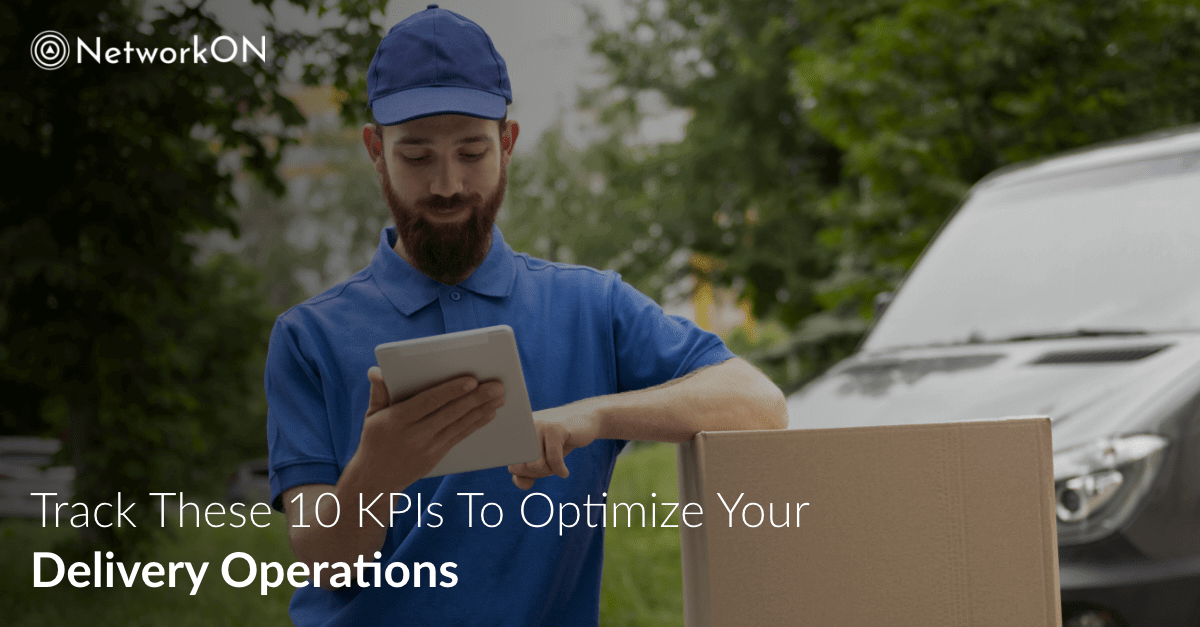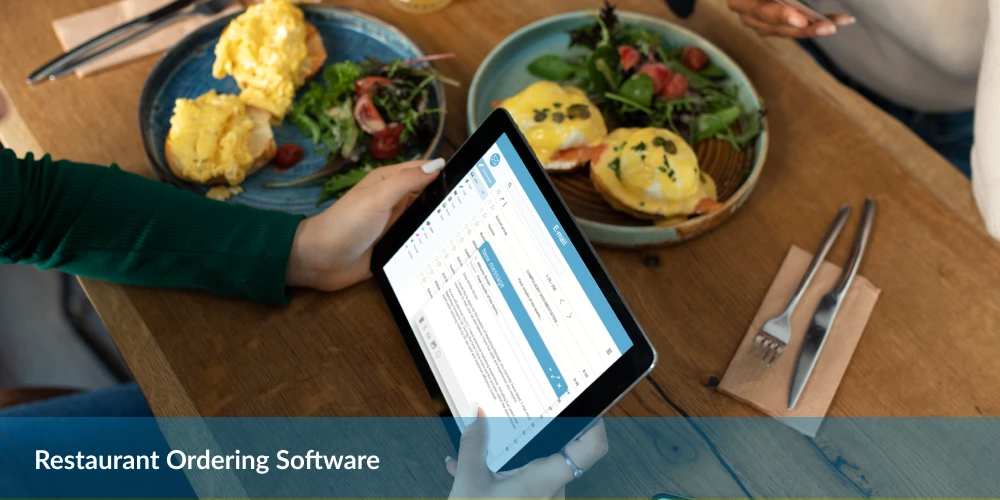Table of Contents
A business involving last-mile delivery services has to effectively manage operations to ensure proper utilization of resources, lower operating costs, and enhanced customer satisfaction.
As Peter Drucker said – If you can’t measure it, you can’t manage it. It means to improve the performance of a system, you need to measure each element to know which of them are failing and increasing costs.
Collecting and analyzing correct data helps you troubleshoot various areas of your business by taking the necessary corrective action to optimize the system’s performance.
The KPIs can give you high-level insights into how multiple business aspects affect profit margins and customer experience.
According to a Forbes article, KPIs (Key Performance Indicators) is a pertinent part of measuring your business’s successes and failures. These indicators help you in the following ways:
- Inform about the overall health of your company
- Demonstrate where your company succeeds and where it fails
- Unify teams to work towards a common goal
- Help you evaluate the performance of team members
KPIs can’t directly lead to cost savings, but they allow you to identify areas of inefficiency in your business that may be driving up the cost. These indicators are essential for your organization because they measure the overall effectiveness of the delivery operation and help you grow your business strategically.
Therefore, we have listed ten essential KPIs or metrics to set the right goals and boost the performance of your delivery Operations.
Metrics to Track:
1. Number of Deliveries
The total number of deliveries executed by your company in a specific period (a week, month, or year) shows the performance of your business.
For instance, higher monthly numbers mean your company succeeded in serving more customers and achieving greater operational efficiency. At the same time, lower delivery numbers can help analysts identify issues and areas for improvement.
2. On-Time Delivery
On-time delivery is the number of timely deliveries executed relative to the total number of deliveries in a specific period. This KPI is the direct measurement of the quality of your service. A higher on-time delivery rate signifies fewer delayed deliveries and exceptional service quality.
A low on-time delivery rate indicates problems like ineffective routes, adverse traffic or weather conditions, high driver idle time, etc.
Tracking and analyzing which orders were delivered late can help determine the problem and take corrective action.
3. Order Accuracy
Order accuracy is the percentage of error-free orders delivered in the first attempt with reference to the aggregate orders delivered. This metric signifies the presence of various inaccuracies in the delivery process, such as the delivery of the wrong product, shipment of damaged goods, late or failed deliveries, etc.
You can calculate the order accuracy percentage using the following formula:
Order accuracy % = [(Total orders – Error orders)/ Total orders]*100
But delivery errors can be complex to track because they can occur at any step of the entire process, depending on the driver, manager, or customers.
Using delivery management software like NetworkON can mitigate the inaccuracies in the process. In addition, you can double-check order details before dispatch and ensure drivers have adequate and correct delivery information.
4. Time to Deliver and Average Delivery Time
Time to deliver is the overall time consumed by the driver in the delivery process from the pick-up location to the drop-off site. Total time is affected by several factors like distance, traffic, number of stops, weather conditions, etc.
This indicator helps you evaluate the performance of the drivers and the effectiveness of the route planning system to optimize routes.
Time to deliver can be used to calculate the average delivery time, which is the aggregate delivery time in a period (week, month, quarter, year) divided by the total number of deliveries.
Average delivery time is a vital metric that allows comparing averages of different periods to determine operational efficiency and potential problems in a specific period.
5. Driver Productivity
Driver productivity can be estimated by correlating the time a driver actively works against the total work time. This metric helps you analyze each driver’s performance and how efficiently they work to meet the business goals. High driver productivity ensures timely delivery and increased operational efficiency.
Driver productivity can be enhanced by decreasing idle time- the total time a driver is not actively working. The idle time can be caused by heavy traffic, time spent picking up an order or making a delivery, unfavourable weather conditions, vehicle issues, etc.
A superior way to diminish driver idle time is to use intelligent delivery management software that allows real-time tracking of drivers and route optimization.
6. Average Cost of Delivery
The average delivery cost demonstrates the overall cost associated with the delivery, including fuel costs, driver wages, vehicle maintenance and repair, and insurance costs. Unsurprisingly, a business will struggle to survive if the average delivery cost is equal to or greater than the revenue.
This metric is often calculated against other reference parameters like total distance, the number of deliveries, etc. For instance, when the average cost of delivery is measured against distance, the formula is:
The average cost of delivery= (Fuel cost+Driver cost+Vehicle cost)/Total distance (in km or mile)
When the average cost has to be measured against the number of deliveries through a specific vehicle, the formula involves cost and the delivery quantities related to the vehicle.
7. Fuel Costs
This metric should be analyzed frequently because last-mile delivery operations consume a significant amount of fuel leading to higher operational costs.
A company using manual route planning generates ineffective routes. Here, route planning software can calculate optimized routes within seconds, reducing the total distance travelled and minimizing the fuel consumed per delivery.
8. Number of Complaints
If a company gets numerous customer complaints, the delivery operation is ineffective, and some changes must be made.
Customer complaints are excellent feedback that helps pinpoint your company’s shortcomings and how you can improve them. You can ensure the following checkpoints to reduce the number of complaints:
- Train your drivers to be well-groomed, polite, respectful, and professional
- Make sure you always deliver on time because delayed deliveries equal more complaints
- Ensure that you deliver accurate orders. Wrong deliveries will never make a customer happy.
9. Vehicle Capacity Usage
Vehicle capacity usage indicates the actual capacity of vehicles used in delivery compared to the vehicle’s total capacity. It implies how efficiently a vehicle is used in the delivery process. Monitoring this metric is essential for efficient delivery operations because it reduces the number of vehicles by ensuring they are loaded to their optimal capacity.
If your business has more vehicles that are not utilized properly, the delivery process will be costly.
10. Safety Ratings
According to a report by the World Health Organization, approximately 1.3 million people die every year globally due to road traffic crashes.
You can increase the safety rating of your business by providing proper training to the drivers and keeping the vehicles in good working condition at all times.
In addition, you can establish a reward program for the delivery partners that maintain good safety records to promote safety habits. All these will ensure safe drivers, timely delivery, and a healthy business.
Conclusion
KPIs help you track the performance of various operations in your business. They allow you to set proper targets for your teams, enabling them to make better decisions.
You can measure these KPIs effectively with robust delivery management software.
NetworkON is an AI-powered delivery management software that allows you to manage the above KPIs seamlessly. With our advanced performance analytics feature, you can get real-time business metrics that enable you to measure team performance and make data-backed decisions to grow your business.
You can easily integrate NetworkON into your existing CRM and POS systems to manage orders, drivers, and customers on a single platform.
Get in touch with our experts today or email us at info@networkon.io to know how we can revolutionize your business.





Escort agency in howrah
Wow, fantastic blog layout! How long have you been blogging for? you made blogging look easy. The overall look of your site is excellent, let alone the content!